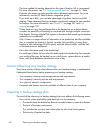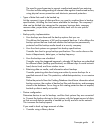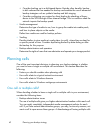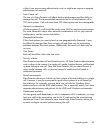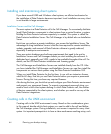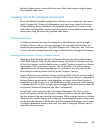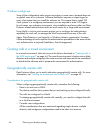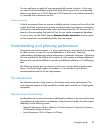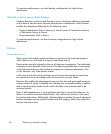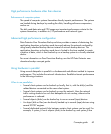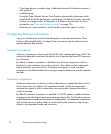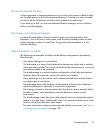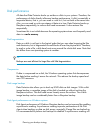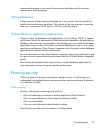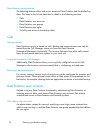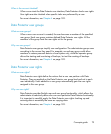To maximize performance, use local backup configurations for high volume
datastreams.
Network or server versus direct backups
Sending data over a network and through a server introduces additional overhead,
as the network and the server become performance considerations. Data Protector
handles the datastream differently for the following cases:
• Network datastream: Disk to Memory of Source System to Network to Memory
of Destination System to Device
• Direct datastream: Disk to Device
To maximize performance, use direct backup configurations for high volume
datastreams.
Devices
Device performance
Device types and models impact performance because of the sustained speed at
which devices can write data to a tape (or read data from it).
Data transfer rates also depend on the use of hardware compression. The achievable
compression ratio depends on the nature of the data being backed up. In most cases,
using high speed devices with hardware compression improves performance. This
is true, however, only if the devices stream.
At the start and at the end of a backup session backup devices require some time
for operations such as rewinding media and mount or unmount media.
Libraries offer additional advantages because of their fast and automated access to
a large number of media. At backup time, loading new or reusable media is needed,
and at restore time the media which contain the data to be restored need to be
accessed quickly.
Data in disk based-devices is accessed faster than that in conventional devices, as
there is no need to load and unload media. This reduces the amount of time spent
for backup and restore. Additionally, disk-based devices enable the use of advanced
backup strategies such as synthetic backup and disk staging, which also reduce the
backup and restore time.
Planning your backup strategy68



